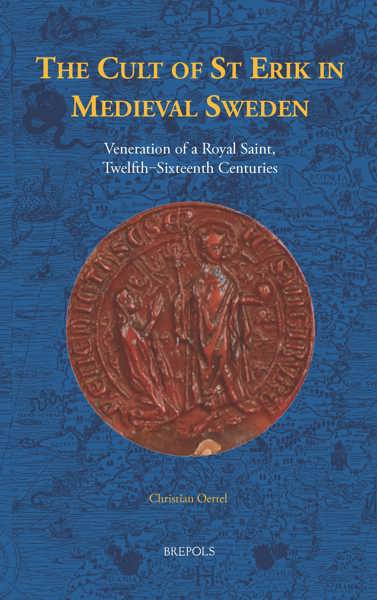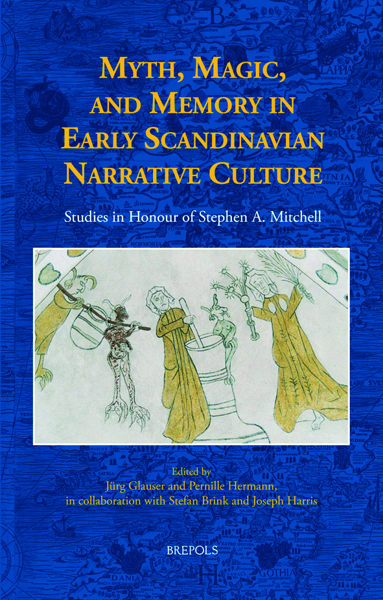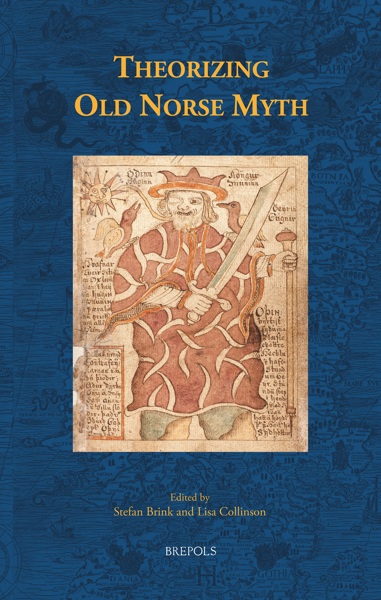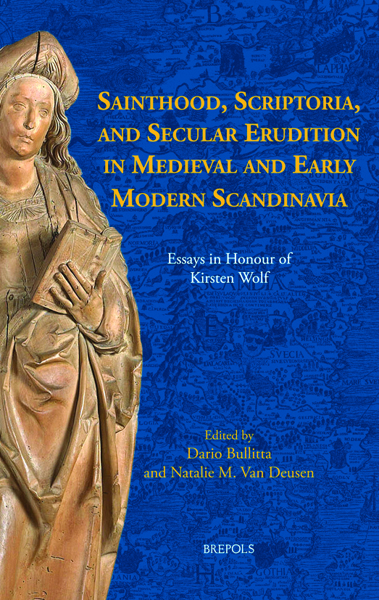
The Cult of St Erik in Medieval Sweden
Veneration of a Royal Saint, Twelfth–Sixteenth Centuries
Christian Oertel
- Pages: 398 p.
- Size:156 x 234 mm
- Illustrations:48 b/w
- Language(s):English, German
- Publication Year:2016
- € 120,00 EXCL. VAT RETAIL PRICE
- ISBN: 978-2-503-55507-2
- Hardback
- Available
- € 120,00 EXCL. VAT RETAIL PRICE
- ISBN: 978-2-503-56474-6
- E-book
- Available
The first comprehensive book on the royal saint St Erik and the interaction between his cult and medieval Swedish society
“The Cult of St Erik in Medieval Sweden: Veneration of a Royal Saint, Twelfth-Sixteenth Centuries is a pleasure to read and learn from. While the amount of historical detail may seem a little overwhelming, the book is structured in such a way that the reader has no problem navigating his/her way though the wealth of information presented. The book is truly a model for analyses of the cult of an individual saint in that it takes a very interdisciplinary approach and carefully reassesses previous scholarly assumptions. (...) Anyone interested in Saint Erik will have to consult this book, which will be of interest to students and scholars within the field of medieval (religious) history, medieval literature, hagiography, and several other disciplines.” (Kirsten Wolf, in The Medieval Review, 05.02.2017)
“This book is a new, fresh narrative (…) Most of earlier scholarship has been published in Swedish and this is the first comprehensive study of this topic published in English. The author's familiarity with the different kinds of sources is impressive. He discusses many different types of material to reconstruct the development of the cult, amongst them the depictions of St Erik. Essentially all sources indicating the veneration of St Erik are taken into consideration. The interdisciplinary approach is a great merit. His study is an impressive synthesis of what is known about this rather opaque king and the veneration of him. Oertel presents many new perspectives and interpretations.” (Thomas Lindkvist, in H-Soz-Kult, 6 September 2017)
« La richesse des annexes (…) le nombre de cartes (17), la bibliographie abondante (42 pages !), un index détaillé et divers résumés (en anglais et en allemand), achèvent de faire de ce volume un livre de référence sur S. Éric, dont la lecture est également recommandée a ceux qui s’intéressent aux saints rois scandinaves. Une lecture d’autant plus profitable qu’elle est servie par un style clair et didactique. » (Fr. De Vriendt, dans Analecta Bollandiana, 135//II, 2017, p. 447)
“The interdisciplinary approach ensures his analysis is thorough and centred around the source material. The result is a well thought-out book with a wealth of information that will be of interest to a wide range of disciplines.” (Flora Guijt, in Parergon, 34/2, 2017 p. 243)
« Ainsi, l’ouvrage The Cult of St Erik in Medieval Sweden: Veneration of a Royal Saint Twelfth-Sixteenth Centuries de Christian Oertel est pertinent pour comprendre les dynamiques de conversion des païens au Moyen Âge en instrumentalisant des figures nationales importantes pour arriver à véhiculer un message auprès de la population. » (Élisabeth Chiasson, dans Cahiers d’histoire, XXXVI, N° 1, Automne 2018, p. 223-224)
« L’ouvrage propose une excellente synthèse, prudente et argumentée, sur la figure du saint roi suédois. » (Corinne Peneau, dans Cahiers de civilisation médiévale, 61, 2018, p. 425)
“Ingesamt ist die Forschung mit der vorliegenden Studie um eine gute und empfehlenswerte Arbeit reicher goworden, die hoffentlich zu vergleichenden Studien anregen wird.” (Carsten Jahnke, in Das Historisch-Politische Buch, 67/4, 2020)
In this first comprehensive monograph on St Erik, the author follows the cult of the Swedish royal saint from its obscure beginnings in the twelfth century up to its climax in the time of the Kalmar Union (1397‒1523). The focus of the book lies on the interaction of the cult with different groups within medieval Swedish society and these groups' attempts to utilize the prestige of the saint to further their political aims. From the middle of the thirteenth century, the cult was particularly connected to the archbishopric of Uppsala and the royal dynasty of Bjalbo. During the fifteenth century the Swedish royal saint symbolized (together with St Olaf of Norway and St Knut of Denmark) the three kingdoms of the Kalmar Union. At the same time, his prestige was successfully employed in the propaganda of King Karl Knutsson (Bonde) and the three Sture-riksförestandare to legitimate their anti-Union politics. In order to gain a broader perspective, the author uses a wide variety of sources. These include a number of texts which contain information about the cult of the saint (legend, miracle collection, offices, sermons, chronicles, charters). In addition, different sorts of depictions showing St Erik on wall paintings, altarpieces, seals, and coins are used in order to give a comprehensive account of the multifaceted veneration of this saint.
Foreword
Chapter 1. Religion, Politics, and the Cult of Saints
Chapter 2. The Sources
Chapter 3. Royal Saints and the Shift of Faith
Chapter 4. The Early Cult (1160‒c. 1250)
Chapter 5. The First Wave of Cult-Intensification (c. 1250‒1319)
Chapter 6. Times of Stagnation versus the Rule of Magnus Eriksson (1319‒89)
Chapter 7. St Erik and the Kalmar Union (1389‒1520)
Chapter 8. St Erik among the Canon of Saints
Conclusion
Zusammenfassung (German summary)
Appendices




